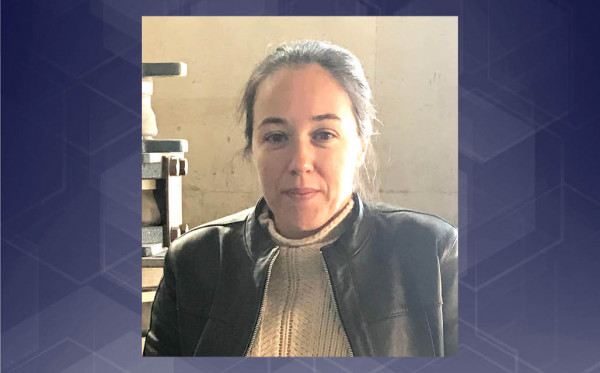Seismic and civil engineering supporting steel structures standard revision
Committee member, senior structural engineer and doctor of seismic engineering, Dr Sara Broglio is at the forefront of translating seismic theory into practice for the highly anticipated revision of NZS 3404.

Sara Broglio - P3404 committee member
25 years of seismic learnings to incorporate
‘This is a big revision having been 25 years since the last version,’ says Sara. ‘In that time there have been considerable learnings from not just the 2011 Canterbury quake but also from across the world including my native Italy, where earthquakes occur.’
‘Of course, seismic engineering is only one aspect of the purpose of the standard, which sets out the minimum requirements for the design, fabrication, erection, and modification of steelwork in structures. But it’s a very important one in factoring how New Zealand structures will respond should, or rather when, earthquakes occur.’
Knowing the standard
While being a contributing academic, Sara is also a practitioner and end user of the very standards she is helping to revise. ‘I would much rather apply what I have learned, as part of my training, than just write about my subject. When you apply a practical lens, you learn by doing and you learn quickly. In using the standard, and how it applies to the New Zealand Building Code, I know where its weaknesses lie and areas for improvement.
In my day job as a senior structural engineer, I lead the Aurecon Christchurch Structural Team, coordinating developing standard and specifications tools, and encouraging training and peer reviewing work with offices in Wellington and Auckland so the standards form a critical part of my role.’
Working with world renowned experts
Despite being a highly experienced seismic engineer herself, Sara feels privileged to be working with the committee. ‘To be able to work with such highly regarded experts on the working groups such as Associate Professor Charles Clifton, who has over forty years of civil engineering experience, and Professor Greg MacRae who was ranked amongst the top 2% of Civil Engineer researchers in the world, is humbling.
There are many experts on the working group who bring their own learnings from experiences gained across the world in Japan, the USA, India, China. This just shows the strength of the standards process in bringing together academic experts with industry end users and supporting that relationship.’
Grounded in engineering
Sara’s role and ability to contribute towards New Zealand’s civil engineering needs came about through a rebellious streak. ‘My father in Italy was a professor of mechanical engineering and told me not to do it. He wanted me to be more of a free spirit and not constrained by the disciplines of engineering.
So of course, I studied building engineering and architecture, then did my Masters and PhD in seismology. I wanted to gain a thorough education and with degree programmes being cut in Italy, engineering still offered the full five years and that set my path.’
Baby on board
This is Sara’s first foray into standards development and she represents possibly a first for Standards New Zealand too. ‘My two-month-old baby attended my first committee meeting with me. I’ve been able to directly benefit from the digital-savvy work culture that has arisen from the pandemic and how it’s embraced videoconferencing.
Being on parental leave and able to still contribute, albeit while nursing a sleeping baby, means life doesn’t need to stop and I can continue to contribute my specialism. It’s not easy but I want to do it. I’m not here for myself I’m here to represent Concrete NZ and my industry. The committee is mostly men but they were very understanding and happy to see a baby on screen. I wouldn’t necessarily recommend it to all new parents, as it would have been impossible with my first child. I’m lucky that my baby daughter sleeps a lot.’
Clarity around earthquakes and structural responses
Sara’s ambition and determination to shape the standard is an inspiration. ‘In industry we always see the end product when implementing technical standards. It’s good to see the process and from a professional point of view what better way to learn.’
‘The standard has lots of cross-referencing from one code to the next. There’s also a need to bring clarity where some areas are open to interpretation. In the time since the last revision, we have a much clearer understanding of how buildings behave in different types of earthquake.’
‘Interest in earthquakes goes back millennia, however modern seismology as a science is relatively young. Even more so when the learnings are applied to structures and modern building materials and how they respond to different waves. There’s still lots of unknowns particularly around the exact location and nature of faults. There’s also much that has improved with dampers and base isolation now becoming more popular considerations in the design process, however guidance around them and testing is needed.’
Giving back through standards for the years ahead
‘When you have a distinct specialism it’s important to leave your mark for others to benefit from. That’s how we grow as industries, societies and individuals. Putting that knowledge into standards, means you’ve given something back that will shape your area of work for years to come. And what better legacy to leave for my daughter’s generation.’
Get involved
If Sara has inspired you to consider sharing your specialism through either an international or New Zealand standard committee, you can learn more and complete an expression of interest on our website.
